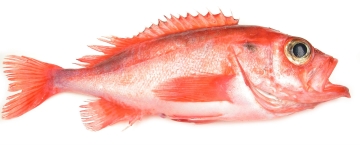700923_Redfish Rebound_360 px width.jpg

Deepwater redfish stocks have rebounded after the fishery in the Gulf of St. Lawrence closed nearly 30 years ago. Credit: Institute of Marine Research, Norway, CC BY 4.0.
Life in Canada’s Gulf of St. Lawrence has been on a seesaw. Some species all but disappeared, allowing others to thrive. Then the seesaw flipped the other way. Some all-but-vanished species tipped up, while the thriving ones tipped down.
Perhaps the most dramatic example is deepwater redfish, a type of rockfish that’s quite different from the redfish in the Gulf of Mexico. From the 1950s until the 1980s, fishers caught about 60,000 tons of the deepwater redfish and another rockfish species every year. Then the population collapsed—it dropped to almost zero. Canada shut down the fishery, and declared the fish an endangered species.
Since 2012, though, it’s rebounded to record levels. Estimates place the mass of all the redfish in the Gulf at about five million tons—more than before the collapse.
As the redfish has come back, the population of shrimp has plunged—in part because of the extra redfish. Young redfish eat tiny organisms known as zooplankton. But adults eat shrimp. So more adult redfish means fewer shrimp.
The redfish rebound may be fueled by climate change. Warmer waters produce more plankton, so there’s more for the youngsters to eat. A lot of them reached maturity at about the same time, so they’re eating up the shrimp.
The fishery hasn’t yet reopened. Canada is pondering who gets to catch the fish, what effect the fishing will have on other species, and how to prevent another collapse—sending the redfish back to the down end of the seesaw.

